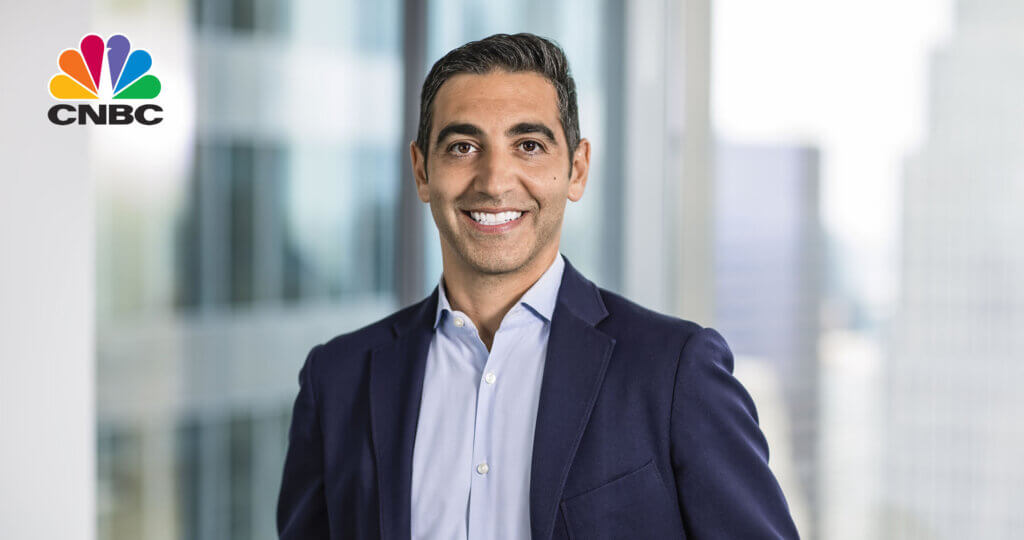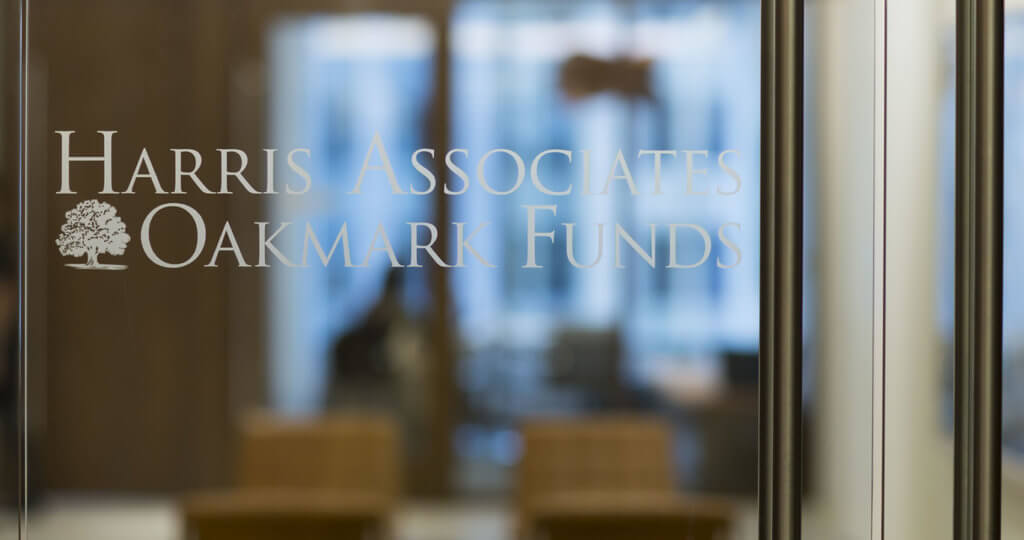Oakmark Equity and Income Fund – Investor Class
Average Annual Total Returns 06/30/18
Since Inception 11/01/95 10.08%
10-year 6.47%
5-year 8.16%
1-year 6.56%
3-month 0.22%
Gross Expense Ratio as of 09/30/17 was 0.87%
Net Expense Ratio as of 09/30/17 was 0.78%
Past performance is no guarantee of future results. The performance data quoted represents past performance. Current performance may be lower or higher than the performance data quoted. The investment return and principal value vary so that an investor’s shares when redeemed may be worth more or less than the original cost. To obtain the most recent month-end performance data, view it here.
Fund Fundamentals
Each year at the end of June, the investment industry experiences a curious phenomenon: the reconstitution of the Russell Indexes. Russell is a large investment industry consultant that began constructing broad market indexes in the 1980s, of which the best known may be the Russell 2000 Index. Russell constructs these indexes in an objective and transparent manner, basically using market capitalization as the guide. Over time, approximately $1 trillion has been committed to passively investing in line with the Russell Indexes and Keefe, Bruyette & Woods estimates they are used as benchmarks for $8.5 trillion in managed assets. Rather than changing its indexes every time a company outgrows its classification or ceases to exist, Russell chooses to reconstitute each index once per year at the end of June.
A sort of cottage industry has grown up around these reclassifications. As the end of June nears, investors begin anticipating index changes. This works to push up the prices of companies likely to move into a higher valuation index, while depressing the prices of those likely to move down or out from their current index. This has the effect of making the valuation characteristics of the actual indexes slightly higher than they otherwise would have been if the changes had taken place more organically. In a June 23 article titled “Rise in Passive Funds Sees Tail Wagging the Dog in Index World,” Financial Times columnist John Authers notes, “Indices no longer merely measure markets. They move them…Generally, new additions to the Russell 2000 handily beat the market in the days leading up to the reconstitution.”
As we have often written, we fundamental investors are glad that this sort of trading is a regular market feature. We are happy to purchase shares from market participants who are selling a stock due to factors that have nothing to do with the business’s intrinsic value. And again to repeat ourselves, we have seldom met the investor whose economic goal was to match or beat an index. One cannot live on relative returns. Investors instead want positive absolute returns like what we strive to obtain for the Equity and Income Fund. Observing non-fundamental activity in the securities market suggests that now would be an appropriate time to review our guiding principles for managing the Fund.
The Equity and Income Fund is a balanced fund—i.e., a fund invested in several asset classes—that has the goal of producing income while preserving and growing capital. Over time, the Fund’s equity allocation has tended to constitute about 60% of the total portfolio with various types of fixed income investments making up the remainder. Many decades of experience have shown that this 60:40 asset allocation buffers volatility such that investors may adhere to a long-term strategy rather than buckling in times of adversity. As well, this allocation has proven sufficient to mediate between the need for current income and long-term growth. Many balanced funds have similar asset allocations, so what are the factors that make Oakmark Equity and Income distinctive?
The most distinctive factor for any fund in the Oakmark Family is the investment philosophy that we at Harris Associates have employed for more than 40 years. For any security we ask, “What is it worth?” and “What is its price?” If a security can be purchased at a sufficient discount to our estimate of its value such that we have a margin of safety, we consider it for investment. For our equity investments, we attempt to determine whether the company shows persistent growth in intrinsic value per share and whether its managers think and act like owners and treat their shareholder-partners appropriately.
Our concept of a balanced fund is also somewhat idiosyncratic. In our industry today, you often hear or see the word “sleeves.” Many target-date funds, for example, are composed of independent asset pools (sleeves) that are mixed together in whatever way the investment manager thinks is appropriate to achieve a particular purpose. Such a fund might be categorized as “balanced,” since it, like our Fund, holds multiple types of assets. We, however, understand a balanced fund to be an integrated portfolio where every holding competes for space with every other holding, actual or potential. We do not have an equity sleeve and a bond sleeve. Instead, the portfolio asset allocation itself will fluctuate depending on our ability to populate the portfolio with dominant investments. Although 60:40 is the typical ratio for the equity/fixed income allocations, equities have at times comprised as much as 75% and as little as 45% of the total portfolio.
Other Distinguishing Characteristics:
Our investment horizon is very long term. The ability to think and act with a long-term horizon is a great advantage. We can also be relatively inactive for long periods. In our view, sometimes the best course of action is to do nothing.
The Fund’s diversification is an outcome of our bottom-up investing process. Our Fund is typically more focused in its holdings than other balanced funds are. Outstanding investment opportunities are scarce, in our opinion.
Although income is always desirable, value is determinative. Income itself is a factor to which we assign value, and like other characteristics, it can be over-priced or undervalued. We have generally found income to be overvalued in the current decade and this has significantly influenced our approach to investing in fixed income securities.
Quality, like income, is a factor to which we ascribe value. We can and will own low-grade fixed income investments in the Fund, but only when we perceive their potential return to be competitive with equities. Similarly, with highly leveraged equities, we demand a substantially higher discount to value before investing.
We are relatively indifferent to the size or domicile of an opportunity. We have the ability to invest the Fund in small-cap, medium-cap and large-cap company shares, and we can invest as much as 35% of the portfolio in international securities.
Finally, benchmarks do not drive our investing. Investors in the Fund should expect results to differ from benchmarks, especially over short time periods.
For investors in mutual funds, the question of “fit” is of paramount importance. Investors make the best decisions when they have invested with funds whose style and philosophy mesh well with their own character and needs. Perhaps the most useful advice we can give fund investors is that they should often check to see if they understand their funds and, if so, consider whether they still fit.
Quarter Review
The Equity and Income Fund earned 0.2% in the quarter, while the Lipper Balanced Fund Index, the Fund’s performance benchmark, gained 1.1%. (Although we are not benchmark driven, we are required to have one.) For the calendar six months, the Fund lost 1.4% compared to a 0.1% increase for the Lipper. The Fund’s nine-month fiscal year return was 2.8%, compared to 3.7% for the Lipper. The annualized compound rate of return since the Fund’s inception in 1995 is 10.1%, while the corresponding return to the Lipper Index is 6.9%.
General Motors, UnitedHealth Group, Mastercard, National Oilwell Varco and Foot Locker led the list of contributors for the quarter. The largest detractors were TE Connectivity, Philip Morris International, Arconic, Bank of America and CommScope Holding. Short-term earnings concerns hurt Philip Morris International, Arconic and CommScope, while banks in general retreated as the fixed income yield curve flattened. Trade war fears also roiled markets and individual stocks. For the calendar six months, Mastercard, National Oilwell Varco, UnitedHealth Group, HCA Healthcare and Foot Locker contributed most while Arconic, Philip Morris International, Nestlé, CVS Health and Citigroup were the biggest detractors from return. For the nine months of the Fund’s fiscal year, Mastercard, Bank of America, UnitedHealth Group, Foot Locker and National Oilwell Varco led the contributors list and Philip Morris International, CVS Health, Arconic, Baker Hughes and Oracle detracted.
Transaction Activity
During the quarter, the Fund added three new positions and exited four holdings. The three new positions are Apergy, American Airlines and Charter. Apergy was obtained through a spin-off from long-time holding Dover. Apergy provides equipment and technologies that help companies drill for and produce oil and gas. The company’s two main product segments manufacture polycrystalline diamond cutters and equipment for artificial lift, both of which are crucial for non-conventional exploration and production. Apergy has generated free cash flow throughout the downturn and we expect a rapid recovery in earnings and free cash flow as North American drilling activity rebounds. Trading at less than 15x our estimate of normalized earnings per share, this high-quality equipment company offers an attractive valuation, in our view.
Our investment in American Airlines is predicated on an evolution and improvement in the industry. Historically, airlines have not made for good investments, despite the usefulness of their services. At issue was the lack of pricing power and poor corporate cultures. However, after years of consolidation, capped by the merger of US Airways and American Airlines in 2013, the industry is now becoming more mature and rational. The three major hub-and-spoke carriers each have strength in their respective hubs and their management teams are all behaving in a healthier manner in terms of capacity additions and capital allocation. Our choice in the sector is American Airlines, due to the unusually large opportunity still in front of the company as it finishes off its merger integration. Also, CEO Doug Parker is in the process of improving the culture and restoring credibility with employees. Parker believes that American Airlines has around $5 billion of pre-tax earnings power and he has bought back 37% of the company’s shares since the merger closed. With the stock selling for a single-digit multiple of normal earnings power, we believe that it is an attractive investment.
Charter gives us the opportunity to invest in what we believe is a strong business with exceptional management at an attractive price. Because of their valuable infrastructure, U.S. cable companies are benefiting from strong demand for high-speed internet access. In many markets, Charter has the only fiber-rich network capable of providing consumers with the high internet speeds they demand. We believe that new competitors are unlikely to enter the market as they will have to invest massive amounts of capital for fractional penetration. This should provide a long runway for continued growth at Charter. The stock has lagged behind the broader market as investors appear to be frustrated with the pace of operational improvement at recently acquired Time Warner Cable. Our experience investing in turnarounds reminds us that it takes more than a couple of quarters to make meaningful progress. We take a more positive, longer term view of the business, and believe Charter is valued at a discount to peer companies and private market transactions.
Besides being an attractive investment, the purchase of Charter also allowed us to lower our capital gain position as we sold Liberty Broadband at a loss. The main asset of Liberty Broadband is Charter stock, so we were able to effectively keep our economic position in Charter, while recognizing a tax loss. We have always actively managed the tax position of the Fund with a goal of maximizing after-tax returns.
The four positions eliminated during the quarter were Fidelity National Financial, Jones Lang LaSalle, and Liberty Broadband A and C shares. Both Fidelity National Financial and Jones Lang LaSalle were strong performers and reached our sell targets. As described above, the two classes of Liberty stock were sold to realize tax losses and we used the proceeds to purchase Charter stock.
As always, we thank our shareholders for entrusting their assets to the Fund and welcome your questions and comments.
The securities mentioned above comprise the following percentages of the Oakmark Equity and Income Fund’s total net assets as of 06/30/18: General Motors Co. 5.2%, UnitedHealth Group, Inc. 2.4%, MasterCard, Inc., Class A 3.2%, National Oilwell Varco, Inc. 2.1%, Foot Locker, Inc. 1.4%, TE Connectivity, Ltd. 3.8%, Philip Morris International, Inc. 2.1%, Arconic, Inc. 0.8%, Bank of America Corp. 4.6%, CommScope Holding Co., Inc. 0.6, HCA Healthcare, Inc. 1.4%, Nestlé ADR 2.8%, CVS Health Corp. 2.0%, Citigroup Inc. 2.2%, Baker Hughes a GE Co. 0.6%, Oracle Corp. 1.9%, Apergy Corp. 0.5%, American Airlines Group, Inc. 0.7%, Charter Communications, Inc., Class A 1.4%, Dover Corp. 1.7%, Fidelity National Financial Inc. 0%, Jones Lang LaSalle, Inc. 0%, Liberty Broadband Corp., Class A 0% and Liberty Broadband Corp. Class C 0%. Portfolio holdings are subject to change without notice and are not intended as recommendations of individual stocks.
The net expense ratio reflects a contractual advisory fee waiver agreement through January 28, 2019.
The Russell 2000® Index measures the performance of the small-cap segment of the U.S. equity universe. The Russell 2000® Index is a subset of the Russell 3000® Index and includes approximately 2000 of the smallest securities based on a combination of their market cap and current index membership. This index is unmanaged and investors cannot invest directly in this index.
Authers, John. “Rise in Passive Funds Sees Tail Wagging the Dog in Index World.” Financial Times (London), June 23, 2018.
The Lipper Balanced Fund Index measures the equal-weighted performance of the 30 largest U.S. balanced funds as defined by Lipper. This index is unmanaged and investors cannot invest directly in this index.
The Fund invests in medium- and lower-quality debt securities that have higher yield potential but present greater investment and credit risk than higher-quality securities, which may result in greater share price volatility. An economic downturn could severely disrupt the market in medium or lower grade debt securities and adversely affect the value of outstanding bonds and the ability of the issuers to repay principal and interest.
The Oakmark Equity and Income Fund’s portfolio tends to be invested in a relatively small number of stocks. As a result, the appreciation or depreciation of any one security held by the Fund will have a greater impact on the Fund’s net asset value than it would if the Fund invested in a larger number of securities. Although that strategy has the potential to generate attractive returns over time, it also increases the Fund’s volatility.
Oakmark Equity and Income Fund: The stocks of medium-sized companies tend to be more volatile than those of large companies and have underperformed the stocks of small and large companies during some periods.
The discussion of the Fund’s investments and investment strategy (including current investment themes, the portfolio managers’ research and investment process, and portfolio characteristics) represents the Fund’s investments and the views of the portfolio managers and Harris Associates L.P., the Fund’s investment adviser, at the time of this letter, and are subject to change without notice.
All information provided is as of 06/30/2018 unless otherwise specified.






